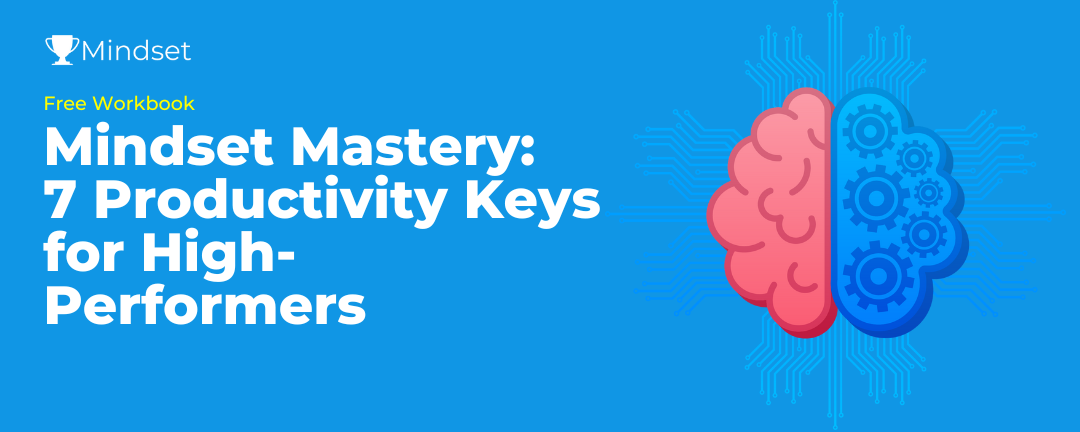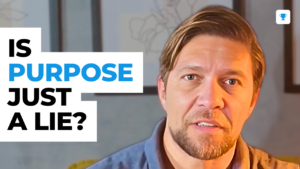
.
✅ FREE WORKBOOK: Mindset Mastery: 7 Productivity Keys For High-Performers
Podcast Version
Every decision you make or, you think you make is actually constrained by hidden forces rooted deep within your mind.
Brain shortcuts that once helped our ancestors survive now often deceive us, from sparking world wars to skewing our everyday judgments.
But what if you could outsmart your brain and master these mental traps, bending them to your will?
Is that even possible? Well, it is.
But only if you can escape the Labyrinth of Cognitive Biases.
But before we get into it, make sure you grant your lifetime access to our free Workbook: Mindset Mastery: 7 Productivity Keys for High-Performing Leaders.
This is your chance to make the mindset shift you need to become a critical thinker by using the 7 mindset keys of the 1% top-performing leaders.
What Is Cognitive Bias?
In 1914, the world was on the brink of a monumental change.
Europe was a powder keg of alliances, militarism, and nationalism, ready to explode at the slightest spark.
This spark came in Sarajevo, with the assassination of Archduke Franz Ferdinand of Austria.
What followed was a complex web of decisions that led to the outbreak of World War I.
Despite warnings and signs indicating the catastrophic outcomes of a large-scale war, The leaders of the time seemed to march into conflict.
They were convinced of their nation’s moral righteousness, military prowess, and the short duration of any potential conflict, ignoring the plethora of voices advocating for diplomacy and caution.
The common belief was that the war, which started in July of that year, would be over by Christmas, a gross underestimation of the 4-year wide-spread conflict that cost millions of lives and shaped the 20th century.
It became clear that a severe miscalculation had occurred. A psychological miscalculation, hidden beneath 250 million years of evolution.
A threat so profound that’s almost invisible and poses a constant threat to our lives – a cognitive bias.
But why do our minds tend to get locked onto cognitive biases?
200,000 BC
Imagine you’re walking through a dense forest 200,000 years ago, your senses on high alert. Every snap of a twig could mean danger.
Back then, our brains developed quick shortcuts—biases—to help us make fast decisions.
- Seeing a moving bush and thinking “tiger!” instead of “wind?”?
- Applying shapes of danger to cast shadows?
- Personifying sounds in the dark?
That’s our ancestors’ survival instincts at work. Pretty handy when you’re dodging predators in the wilderness.
But flash forward to today, and it’s a whole different ballgame. Our world has changed massively, but our brains? Not so much.
Those same biases that kept our ancestors safe can now trick us up in modern life.
Ever jumped to a conclusion about someone based on a first impression or felt uneasy about a new experience for no reason?
That’s exactly those ancient biases constraining your thoughts, still pulling the strings.
A Critical Thinker’s Guide Against Cognitive Biases
Daniel Kahneman, in his book “Thinking, Fast and Slow” tells us that we have 2 thinking systems:
- One fast, intuitive, and emotional.
- And another one slower, more deliberate, and logical.
Most of the time, that fast system takes the lead, which, as you might have guessed, is where your biases live.
In a world filled with an infinite amount of information, our brains are trying to keep us from getting overwhelmed.
But the trade-off is that sometimes we sacrifice accuracy for the sake of simplicity.
Becoming aware of these biases is the first step towards not letting them hijack our decision-making process.
It doesn’t mean we can just switch them off—after all, they’re a fundamental part of how the brain works.
But it does mean we can start questioning our knee-jerk reactions and the shortcuts our brains love to take.
Being a critical thinker means we have to challenge those instincts, hitting the pause button on our brain’s fast system and letting that slower, more thoughtful system take over.
Why? Because the threats we face now aren’t tigers lurking in the bushes; they are highly sophisticated things like misinformation, finances, and a much more complex social life.
In the Mindset Mastery Workbook, you will learn how to become a critical thinker by using the 7 mindset keys of the 1% top-performing leaders, like Chronobiology, the 4 Processes of Thinking, the Eisenhower Matrix to help you manage stress, foster a healthier productivity, and master decision-making efficacy.
By granting your free lifetime access to this workbook today, you will not only master the labyrinth of cognitive bias now but also, have access to all future updates at no cost. The link is in the description.
Common Types of Cognitive Bias
Cognitive bias is your brain’s way of saying, “Let’s make this easier,” even if it means skipping some of the logic and facts.
To fight these biases and become a critical thinker who makes decisions based on facts, let’s look closely into the 3 most critical cognitive biases that threats our modern life:
- Confirmation Bias.
- Anchoring Bias
- The Dunning-Kruger Effect.
The Confirmation Bias
The Confirmation Bias is like your brain’s favorite playlist; it loves to play the hits that align with your music taste.
That’s especially dangerous in the world where people develop their opinions through the algorithmically optimized lens of social media, where everything we see is what we’d like to.
The Anchoring Bias
The Anchoring Bias is when you’re shopping for a new gadget, and the first price you see sets the bar for what you expect to pay.
Later, every price you see is judged against that first number, whether it’s a bargain or a rip-off.
That initial price tag anchors your expectations, potentially skewing your perception of value.
That’s even more damaging when applied to our social lives. Prejudice, assumptions, and misguided expectations are on the menu.
The Dunning-Kruger Effect
The Dunning-Kruger effect is a mismatch between what we know and what we think we know.
As John Wheeler said:
“As the Island of Knowledge grows, so do the shores of our ignorance—the boundary between the known and unknown.”
This cognitive bias recognizes that people with the least knowledge on a topic are often the most confident in their opinions, while true experts tend to underestimate their deep knowledge.
This effect shows that sometimes, confidence can be a sign of ignorance.
When you know a little about something, it’s easy to think you know a lot because you don’t yet grasp how much there is out there.
How to Overcome Cognitive Biases
The labyrinth of cognitive biases can feel like trying to outsmart our own brains.
But there are some practical steps we can take to shine a light on these sneaky mental patterns and become better critical thinkers.
Pause
Our biases often kick in when we’re making quick, automatic decisions.
So, the first step? Pause.
Taking a moment to reflect can help shift from our brain’s fast, intuitive mode of thinking to its slower, more analytical mode.
Next time you’re about to make a snap judgment, take a deep breath and give yourself a chance to think twice.
Play Devil’s Advocate
One of the best ways to pushback Confirmation Bias is to seek out and welcome opposing viewpoints.
The world of a child is narrowed by the experience they have inside a familial setting, but the more we grow, the more diverse our perceptions of the world become.
Failing to make that leap turns us into old infants, incapable of absorbing the multidimensional aspects of the human experience.
To become a critical thinker, you must challenge yourself to consider the other side of arguments, even if it’s just a mental exercise.
This can help broaden your perspective and reduce the likelihood of making decisions based uniquely on information that confirms your pre-existing beliefs.
Seek Feedback
Another aspect that differentiates critical thinkers from trivial thinkers is how they approach feedback.
Sometimes, we’re just too close to our own thought processes to recognize biases.
In that case, feedback becomes invaluable.
Don’t be afraid to ask friends, family, or colleagues for their perspectives, especially if they’re likely to have a different viewpoint of what you expect.
This can help you identify blind spots in your thought process.
But that’s not all.
Educate Yourself
To become a skilled critical thinker, education is key, especially to counterattack the Dunning-Kruger Effect.
This mindset doesn’t just make us better learners; it makes us better thinkers, better communicators, and ultimately, more adept navigators of both our personal and professional lives.
Accept Uncertainty
On top of that, many biases arise from our desire for comfort, self-realization, and quick answers.
Always be cautious with your so-called good intentions. Compassion is not the only moral value there is.
Many times in your life, to produce the most positive outcome, you will be required to be combative, strong, fierce, unshakable, and harsh.
How do you know the difference?
Don’t look at the situation and try to figure out what to do.
Look to the possible outcomes of any given situation and apply the proper course of action to achieve the most productive and positive outcome.
If being compassionate is needed, apply it. If being combative is needed, don’t shy away.
A combative critical thinker could have avoided the massive death toll of World War I.
So take small and consistent steps to question your assumptions and expand your perspective.
By doing so, you’ll not only become a more effective critical thinker but also a more responsible, empathetic, and understanding individual.




